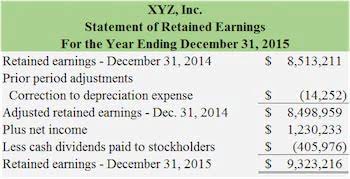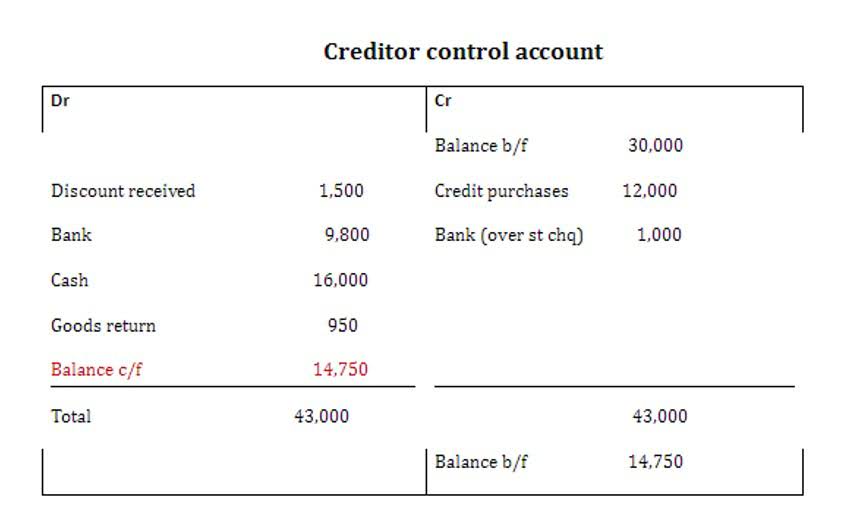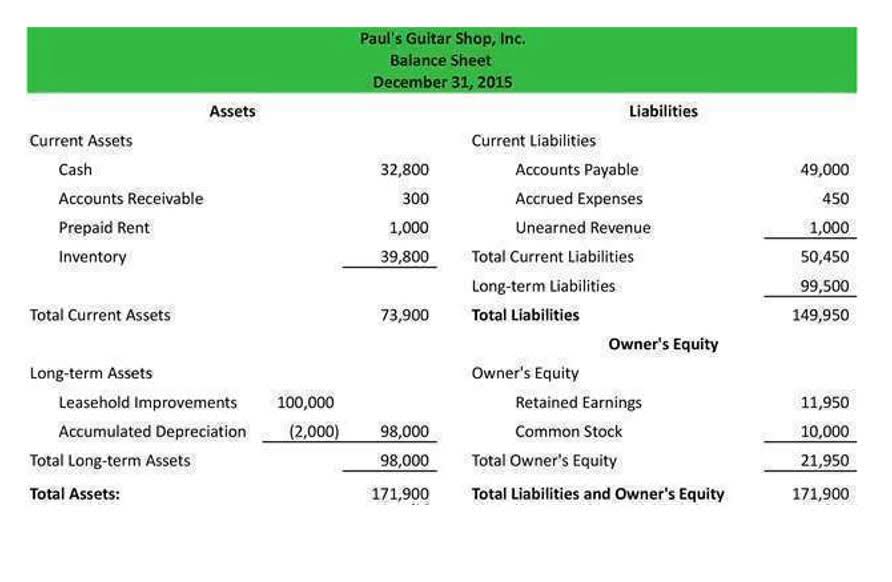Adjusting Entries: The Key to Accurate Financial Statements
The accounting method under which revenues are recognized on the income statement when they are earned (rather than when the cash is received). Note that the ending balance in the asset Prepaid Insurance is now $600—the correct amount of insurance that has been paid in advance. The income statement account Insurance Expense has been increased by the $900 adjusting entry. It is assumed that the decrease in the amount prepaid was the amount being used or expiring during the current accounting period.
Understanding Adjustment Entries
- First, during February, when you produce the bags and invoice the client, you record the anticipated income.
- That part of the accounting system which contains the balance sheet and income statement accounts used for recording transactions.
- Once you’ve wrapped your head around accrued revenue, accrued expense adjustments are fairly straightforward.
- They ensure that the financial statements of a company reflect the real financial position and performance of the business for a specific time period.
- Considering the amount of cash and tax liability on the line, it’s smart to consult with your accountant before recording any depreciation on the books.
Some adjusting entries entail estimating amounts for expenses like depreciation or bad debt. https://vamosacambiarelmundo.org/data-center-consolidation/ Organizations must comprehend estimation methods, like straight-line depreciation or a percentage of sales for bad debt and implement required adjustments to ensure accurate financial representation. Regularly reviewing and adjusting financial records through adjusting entries allows a company to analyze its financial performance effectively. This process helps identify underperforming areas, enabling corrective action to improve the company’s financial health and overall chances of success.
Adjusting Entries – Asset Accounts
The account is usually listed on the balance sheet after the Inventory account. This is an operating expense resulting from making sales on credit and not collecting the customers’ entire accounts receivable balances. The balance sheet reports the assets, liabilities, and owner’s (stockholders’) equity at a specific point in time, such as December 31. The balance sheet is also referred https://informatic74.ru/html/1_8.htm to as the Statement of Financial Position.
Types and examples of adjusting entries:
Deprecation is the practice of expensing the value of a capital asset over the period of its useful life to align with the matching principle. Depreciation technically falls under the estimates umbrella, but since it’s so common in financial accounting, it’s worth discussing it specifically. To illustrate, let’s assume that your company leases out apartment spaces for $1,000 per month. The amount covers the entire month from the first day to the last day. Here’s an example with Paul’s Guitar Shop, Inc.,where an unadjusted trial balance needs to be adjusted for the following events.
- It will contain the date, the account name and amount to be debited, and the account name and amount to be credited.
- Non recording of this revenue earned, will mean that the company is not abiding by the revenue recognition principle of accounting, which states that revenue must be recognized when it is earned.
- Adjusting entries help align revenues and expenses with the correct time periods, providing a clearer picture of a company’s financial health.
- The goal of accrual accounting is to record income and expenses in the period where the real economic transaction occurred rather than when cash is exchanged.
- The purpose of adjustment entries is to ensure that the financial statements accurately reflect the company’s financial position and performance.
- A third classification of adjusting entry occurs where the exact amount of an expense cannot easily be determined.
When office supplies are bought and used, an adjusting entry is made https://focusandleap.com/2025/01/27/building-a-thriving-coaching-business-a-comprehensive-guide/ to debit office supply expenses and credit prepaid office supplies. Prepaid expenses refer to assets that are paid for and that are gradually used up during the accounting period. A common example of a prepaid expense is a company buying and paying for office supplies. The term prepaid expense is sometimes replaced with the term deferred expense.
- Such expenses are recorded by making an adjusting entry at the end of the accounting period.
- If the revenues earned are a main activity of the business, they are considered to be operating revenues.
- Without these adjustments, financial statements could be misleading, affecting decision-making by stakeholders.
- The entries will ensure that the financial statements prepared on an accrual basis in which income and expense are recognized.
- Unpaid expenses are those expenses that are incurred during a period but no cash payment is made for them during that period.
- This task is usually performed automatically by the accounting software, so no manual journal entry needs to be recorded.
Examples of assets that may be depreciated include buildings, equipment, and vehicles. Moreover, by using examples we will understand the process of adjusting entries. Delving further, we will outline the step-by-step process of creating and adjusting entries and understand how automation plays a crucial role in adjusting entries seamlessly. The main purpose of adjusting entries is to update the accounts to conform with the accrual concept. At the end of the accounting period, some income and expenses may have not been recorded or updated; hence, there is a need to adjust the account balances. For deferred revenue, the cash received is usually reported with an unearned revenue account.
How often your company books adjusting journal entries depends on your business needs. Once a month, quarterly, twice a year, or once a year may be appropriate intervals. If you intend to use accrual accounting, you absolutely must book these entries before you generate financial statements or lenders or investors. In order for financial statements to be completed on an accruals basis and comply with the matching principle, adjusting journal entries need to be made at the end of each accounting period. At the end of each accounting period, an adjusting entry is made to record the current year’s vehicle cost allocation by debiting depreciation expense and crediting accumulated depreciation.
In order to receive a discount from internet service provider, Company D pays the annual fee of $ 2,000 which covers from 01 June 202X to 31 May 202X+1. The accountant is preparing the adjustment at year-end to correct this balance. Company B is a consultant company, they usually bill invoices and recognize revenue base on agreement with the client. One month before the year-end, they have started working on one big project amount $ 500,000.
Step 4: Make Adjusting Journal Entries
Accumulated depreciation refers to the accumulated depreciation of a company’s asset over the life of the company. On a company’s balance sheet, accumulated depreciation is called a contra-asset account and it is used to track depreciation expenses. Thus, every adjusting entry affects at least one income statement account and one balance sheet account. The other adjusting entries are used to adjust asset and liability accounts to match revenues and expenses in the same way.
Unit of Account: Definition, Example & Money Functions
The first learning platform with all the tools and study materials you need. No matter where you are in the world, gold holds its value and can be traded. It’s undeniable that your gold will still be valuable tomorrow, next month or even next year. At its core, a Unit of Account is like a universal measuring stick for determining the value of things we buy and sell.
Besides national currencies, a unit of account can also refer to an artificial currency used solely for accounting purposes. Such units do not have physical manifestations but help in comparing and aggregating financial data across different real currencies. Overcoming challenges and gaining broader acceptance are crucial steps for it to be recognized as a consistent Unit of Account. As the cryptocurrency matures, its role in economic transactions may become more established. Bitcoin’s immunity to inflation makes it a potential contender for a consistent Unit of Account. This predictability instills confidence in businesses and individuals, facilitating more reliable long-term financial planning.
What is included in a financial due diligence review
A unit of account is a standard numerical monetary unit of measurement of the market value of goods, services, and other transactions. It is one of the three functions of money, alongside being a medium of exchange and a store of value. In essence, it acts as a yardstick that measures the worth of goods and services against one another. A unit of account is a standard numerical monetary unit of measurement that provides a consistent way to value and compare different goods and services.
Checking Your Understanding
- Viewed from this perspective, it is evident that the unit of account feature of money significantly drives its function as a medium of exchange.
- Today, fiat money serves as the primary unit of account in most economies, providing a stable and consistent measure of value.
- These commodities served as a standard measure, but they had limitations due to their lack of portability, divisibility, and durability.
- Currently in developed countries, bitcoin appears to be used more as a speculative asset (like art and wine) rather than as a low-risk store of value (like gold).
For example, when you buy a coffee, the price is expressed in dollars, the standard unit of account in the United States. This common measure simplifies transactions by providing a clear and consistent way to express the value of diverse products. As a ‘Unit of Account’, money provides a universal, accepted standard of measurement in economic contexts. It allows for computation of values or prices and facilitates the comparison of different goods and services. It plays an indispensable role in every financial activity, from setting product prices to preparing financial reports and statements.
It allows an economic decision’s benefits to be weighed against the costs of all other possible goods in that society, without having to refer to any directly. Prices of various smartphones are set in terms of USD, such as $799 for a mid-range model or $999 for a high-end model. This pricing allows consumers to easily compare the cost of different smartphones and make purchasing decisions based on their price assessments relative to their features and brand value. First, only decentralized cryptocurrencies might function as a store of value based on rarity. A cryptocurrency that is not decentralized is not free of counterparty risk; it cannot function as a store of value in the long run, as there is risk of unlimited inflation as with fiat currency.
The transition to modern fiat currencies, which have no intrinsic value but are backed by the trust in the issuing government, marked a significant shift in the role of money as a unit of account. Today, fiat money serves as the primary unit of account in most economies, providing a stable and consistent measure of value. It’s not just businesses that benefit from the unit of account function of money.
The ‘Unit of Account’ is utilized in a practical economy for pricing, accounting systems, economic analysis, and making key financial decisions such as investments and budgeting. Money juggles these functions, knitting the complex tapestry of our financial transactions and economic structures together. By functioning as a reliable ‘Store of Value’ and an agreed ‘Unit of Account’, money sustains and steers the wheels of economics. On the other hand, money also acts as a ‘Store of Value’, promising to keep its value over time. It gives assurance to people that the money they save today will have a similar purchasing power in the future.
Known for its stability and low inflation, the Swiss franc is often used as a benchmark in financial markets. This function provides a base of comparison amongst values of different things (products, services, etc.) being exchanged in an economy. Money, as we know it, plays an instrumental part in any economic setup, performing dual roles as both a ‘Unit of Account’ and a ‘Store of Value’. The two functions are interconnected and simultaneously vital for the comprehensive functions of money.
- While navigating through the vast world of economics, it’s necessary to delve into the fundamental concepts of ‘Store of Value’ and ‘Unit of Account’.
- This dominance has doubled since the all-time low of 32.8 percent in January 2018, the peak of the cryptocurrency hype.
- Unravelling their significance deepens our understanding of commerce, finance and trade.
- By mastering the role of money as a unit of account, students can enhance their ability to interpret data, perform accurate calculations, and provide well-founded economic analysis in their homework.
- Imagine it as a common language that everyone agrees upon to express the worth of goods and services.
- The central bank’s actions directly impact the real value of the unit of account, affecting everything from transaction costs to deferred payment agreements.
How does a unit of account differ from a standard currency?
Policymakers would need to explore alternative methods for managing economic growth. Having a standard measure makes it simpler to compare the value of different items. Our financial management platform gives you real-time visibility into spending patterns, contract commitments, and unit of account in economics financial metrics that support thorough diligence reviews. This process helps pinpoint financial risks and confirms the company’s stated financial position.
Our services are not available to retail clients residing in, or corporate clients registered or established in, the United Kingdom, the United States, the European Union, or other restricted jurisdictions. The information provided on this website is for informational purposes only and does not constitute a public offer, financial or investment advice, or marketing communication. FinchTrade group is not MiCAR compliant, nor FCA regulated, and nothing on this website should be construed as an offer to provide regulated services or financial instruments. Visitors are encouraged to seek independent legal, financial, or professional advice before making any decisions based on the information presented. FinchTrade group assumes no liability for any actions taken in reliance on the content of this website.
Common Examples of a Unit of Account in Various Economies
Investors and their outside accountants will scrub the balance sheet, as that contains the full financial history of the company. Before this process begins, your accounting team should ensure there are dedicated and detailed financial workpapers that explain the balances in each balance sheet account. This will go a long way to providing credibility and will help the outside accountants trace balances and transactions. Also, with high inflation and government mistrust, numerous African countries are growing bitcoin hotspots.
The Dual Role of Money: Unit of Account Vs Store of Value
Inflation erodes the purchasing power of money, which can complicate the use of a currency as a unit of account. When prices rise, the same amount of money buys fewer goods and services than before. This can distort price comparisons over time and complicate long-term financial planning and contracting. Moreover, this concept is crucial in ensuring clarity in legal contracts, financial agreements, and economic policy evaluations. By mastering the role of money as a unit of account, students can enhance their ability to interpret data, perform accurate calculations, and provide well-founded economic analysis in their homework. This foundational understanding not only aids in homework but also builds a solid base for future studies and real-world economic decision-making.
Bitcoin as a Unit of Account
If you were to buy a book priced at £10 and a toy costing £20, you are able to compare the values and make an informed decision based on your budget and needs. This is made possible because there’s a standard metric – the pound – enabling accurate comparison. Without the unit of account feature, the economic landscape would be chaotic – imagine having to barter goods or services without a standard value measurement!
Cost Accounting: Principles, Methods, and Decision-Making Tools

Effective asset management requires a systematic approach, such as using technology what are retained earnings to monitor assets, setting regular maintenance schedules, and implementing inventory control strategies. By optimizing asset management, companies can extend the lifespan of their assets, reduce downtime, and lower overall maintenance and replacement costs. Asset management is a crucial part of cost control as it focuses on maximizing the value of company assets and minimizing the cost of maintenance and replacement.
- While not always accurate (installation time may be shorter the more units you install at a time, for example), unit-rate will always be a tool on the table of any cost engineer.
- It is a reactive strategy that seeks to address cost overruns after they have already occurred.
- Regular review and adjustment of cost control strategies based on performance metrics and market conditions ensure ongoing effectiveness.
- Cost Control is important because it helps businesses and organizations manage their finances effectively.
- Effective cost control measures and initiatives can improve the project’s bottom line and overall financial performance.
Budgetary control
By digitizing expense reporting, receipt capturing, and approval workflows, Happay streamlines the entire process, saving time and resources. The waste reduction strategy aims to minimize waste generation and maximize resource utilization. This is achieved by implementing recycling programs, optimizing production processes to minimize scrap or rework, and promoting sustainable practices. TABLE 1.1 Average daily total camp cost as the sum of the cost of walking time plus the cost of moving camp. The workers’ reluctance to adapt to new cost-effective practices and procedures can hinder the company’s ability to save money. Without proper data management, an organization may miss warning signs that a process is not functioning optimally.

Performance measurement
It helps evaluate cost management effectiveness by identifying if the actual costs are over or under the budgeted amounts. The first step in project cost management is to define the baseline for your project’s budget. This involves identifying all potential costs and inputs related to the project, including labor, materials, equipment, and any other expenses.
Professional services industry
Regularly reviewing cost performance indicators and comparing them to the baseline can help keep the project within budget. Just like personal budgeting, you can do a variety of things, like categorize spending, determine areas where your team spends the most money, and find ways to limit spending in each area. Successfully doing all these things is what controls the budget and increases profits. It has to be monitored continuously, and decisions regarding budgets and execution need to be taken cautiously.
Cost cost control management assumptions are the underlying factors and conditions that affect how cost management is performed and what results are expected. In this section, we will explore some of the common cost management assumptions and how they influence the cost management process. We will also discuss how to identify, validate, and document the cost management assumptions for a project or a business. Standard cost accounting sets predetermined standard costs for materials, labor, and overhead. In this process actual costs are compared with the standard costs, enabling organizations to identify and address cost variances.


Cost management in project management is the process of planning, estimating, budgeting, and controlling costs with the aim of completing the project within the approved budget. It involves a continuous process https://www.bookstime.com/articles/accounting of measuring and monitoring project activities and expenses and implementing necessary adjustments to ensure that the project’s financial resources are used effectively. Activity-based costing (ABC) allocates overhead costs based on the activities that drive those costs. This method provides a more accurate picture of product costs, especially in complex environments with diverse products and services.
Chapter 8: Monitoring Foodservice Operations I: Monthly Inventory and Monthly Food Cost.

Five cost control methods include budgeting and forecasting, process optimization, vendor management, waste reduction, and implementing technology solutions for automation. Organizations will proactively identify and manage risks that may impact cost performance, such as supply chain disruptions, market fluctuations, and regulatory changes. This will involve implementing risk mitigation strategies and robust contingency plans. The adoption of digital technologies, such as cloud computing, automation, and artificial intelligence, will revolutionize cost control practices.
- Quality control measures typically involve a systematic approach to identify and correct flaws or defects in products or services.
- Happay integrates with enterprise resource planning (ERP) systems, enabling seamless synchronization of financial data.
- Keep in mind that any changes to the project scope will impact the project budget and costs, so keep a close eye on scope creep.
- In the realm of small business operations, the strategic management of postal expenses stands as a…
As the ultimate goal, emphasising the delineation of controllable and uncontrollable factors. Comprehensively analyzing various constraints in the scheme and analyzing and comparing costs and effects. Effective cost control contributes to better project quality by ensuring sufficient resources are available for critical quality-related activities. To properly control costs, teams must monitor spending at various levels within the company. This allows each part of the company’s budget to receive thorough attention and analysis.
M vs MM What Is The Correct Abbreviation for “Million”?

The prevailing thought as to why Romans used letters to represent numerical values instead of numbers involves the fingers on a person’s hand. I have seen one million represented by mn and also by m (both lower case). Hence, you might see $1,400,000 expressed as $1.4 million or $1.4MM or $1.4mn or $1.4m. The Report containing certain information of company C is given below, representing the same with the compact number representing mode. The Authorized Share Capital of Company is $15,000,000 shares of $ 100 each i.e. $ 1,500,000,000. While Roman numerals are technically additive (MM is really 1,000 plus 1,000 or 2,000), MM is still a fairly common way of abbreviating millions, especially in certain industries like oil and gas.
MM in the Context of Credit Cards

“MM” is an old-fashioned abbreviation, but it still sees some usage today. You might come across “mm” in scientific or engineering fields, where different values are required, and they can reach well into the millions as a unit. contra asset account “M” is only used as an abbreviation when talking about a lot of money or in scientific communities. You might not put a lot of thought into your abbreviations, and that’s okay. However, there are official abbreviations out there that you might come across, and it would help to know about them.
- Understanding the MM requirement is crucial for responsible credit card management.
- The use of “MM” fit seamlessly into this new framework, offering a concise way to represent substantial amounts without cluttering financial records.
- Roman numerals are often used in accounting to help abbreviate and designate numbers.
- The word “million” is most often used in reference to money, but is also frequently used in exaggeration.
- As you navigate the world of credit cards, it’s important to have a firm grasp on the terminology.
What does MM and M mean in dollars?
When a purchase order is created, commitments are generated in the financial accounts, and when the goods are received, the system automatically updates the accounts payable and inventory accounts in FI. “mm” is often left uncapitalized (though there are no specific rules that state which way it should be written). It is Latin for multiplying one “thousand” by itself to create the “million” number. “mm” (which is usually kept in the lower case) is an old-fashioned abbreviation that doesn’t see much common usage. You’ll find that it’s mainly used in the energy sector, but it otherwise doesn’t get recognized.

Let’s settle this. Millions of dollars on a presentation. 2 Ms (MM) or 1?
This market is not that heavily regulated since most of its players can be considered professional investors. Also, most transactions are settled over-the-counter and the size of each transaction is regularly high. This market has become more accessible to the investing public indirectly, through money market accounts and MM funds offered by financial services firms. These firms invest the money available in their client’s accounts in MM instruments that provide an additional investment return to their client’s money.
- By adopting “MM,” companies can ensure that their financial reports meet these standards, enhancing their credibility and attractiveness to global investors.
- This underscores the importance of context and clarity in financial documentation.
- The maturity of these instruments can range from a few hours to one year.
- In finance and accounting, MM (or lowercase “mm”) denotes that the units of figures presented are in millions.
- Review a few examples of sentences that feature common abbreviations for billion.

MM plays a crucial role in the context of credit cards, as it determines the minimum payment required to keep your account in good standing. Credit card issuers set the MM based on various factors, including the outstanding balance, interest rate, and terms and conditions of the card agreement. This amount is calculated by mm meaning finance the credit card issuer and is usually a small percentage of your total outstanding balance or a predetermined flat fee. In finance and accounting, MM (or lowercase “mm”) denotes that the units of figures presented are in millions. Thus, MM is the same as writing “M multiplied by M,” which is equal to “1,000 times 1,000”, which equals 1,000,000 (one million).
- CFI is on a mission to enable anyone to be a great financial analyst and have a great career path.
- The Greek option is typically capitalized when multiple abbreviations are used for accounting purposes.
- While Roman numerals are technically additive (MM is really 1,000 plus 1,000 or 2,000), MM is still a fairly common way of abbreviating millions, especially in certain industries like oil and gas.
- So, let’s dive in and unravel the mysteries of MM in credit card terminology.
- This account offers a return on investment a little bit higher than what the regular savings account is currently offering.
Common Uses of MM in Credit Cards
One of the primary benefits of using “MM” in international reporting is its Cash Flow Management for Small Businesses ability to reduce ambiguity. Financial documents often traverse multiple jurisdictions, each with its own set of conventions and terminologies. By employing “MM,” companies can present their financial data in a universally understood format, minimizing the risk of misinterpretation.

Roman abbreviations are usually not capitalized when using this method (1MM vs. 1mm), but each firm has different standards they follow. Most abbreviations used for large cash sums today come from ancient Greek and Roman societies. We still use Roman numerals for some accounting methods, while large figures are designated by the Greek alphabetic equivalent of the specific term. A. You’ve identified two commonly used conventions in finance, one derived from Greek and the other from Latin, but neither one is standard. So, let’s dive in and unravel the mysteries of MM in credit card terminology.
Miscellaneous Expenses: Examples, Payments and Expense Statements

As we will discuss in further detail below, miscellaneous expenses might consist of the purchase of a new office printer, a one-off marketing campaign, or fees paid to financial institutions. Miscellaneous expenses are unexpected, minor costs not included in your regular budget, like small repairs or office supplies. Most financial experts recommend keeping miscellaneous expenses under 5% of total operating expenses for optimal financial visibility and control. Smart businesses use miscellaneous expenses as a financial early warning system – a place where new spending patterns can emerge and be identified before they impact profitability. When COVID-19 forced companies to shift to remote operations, many finance teams saw a surge in miscellaneous expenses.
Is miscellaneous expense an operating expense?
Keeping close tabs on miscellaneous expenses also allows businesses to understand how much money their company spends and make changes as needed to remain profitable. On the other hand, travel expenses are costs an employee must pay when they travel for work. It includes airfare, accommodations, and meals while away from home on business trips. Miscellaneous expenses can also be a tool for businesses to manage their cash flow. If companies can see these costs more clearly, they can manage their money more effectively. Expenses can help businesses identify areas of potential growth or cost savings, which they can invest back into the company.
- You can’t deduct the expenses of lunches with co-workers, except while traveling away from home on business.
- From small businesses to large corporations, the impact of office supplies on business expenses cannot be overlooked.
- Even if you have turned some parts of your home into an office workspace, the cost incurred for office suppliers goes to miscellaneous expenses and can’t be claimed for tax deductions.
- To find a clinic near you, visit TaxpayerAdvocate.IRS.gov/about/LITC or see IRS Pub.
- An exception to this rule is where the services are obtained in relation to the acquisition of an asset, in which case its cost is accumulated in the cost of that asset.
- Fees you pay to a broker, bank, trustee, or similar agent to collect your taxable bond interest or dividends on shares of stock are miscellaneous itemized deductions and can no longer be deducted.
Administrative Fees

In regular business, many petty expenses are incurred Certified Public Accountant for the smooth functioning of the business. However, these expenses are neither regular in nature nor significant in amount. Also, these expenses don’t fit into other standardized general ledger accounts such as Wages, Salaries, Advertisements, etc., to name a few. You may be eligible to deduct some of your business start-up costs up to $5,000 and organizational costs up to $5,000 in the first year of your business.

Publication 529 (12/ , Miscellaneous Deductions
- Uniforms can enhance professionalism and brand identity, making them a worthwhile investment for many businesses.
- The following are a few frequently asked questions about this tax category, and how FreshBooks can help you stay organized during tax time.
- Michelle Payne has 15 years of experience as a Certified Public Accountant with a strong background in audit, tax, and consulting services.
- If any of these expenses increase in size in later periods, they may then be tracked within a separate account.
- A state agent shall submit the travel expense reimbursement request within sixty days of the last date of travel.
It also includes those expenses related to those students for whom you provide that instruction. Impairment-related work expenses are the allowable expenses of an individual with physical or mental disabilities for attendant care at his or her place of employment. They also include other expenses in connection with the place of employment that enable the employee to work. Any applicable conference materials such as agendas, brochures or otherwise shall be required as supporting documentation. If the event includes or provides a meal, the state agent shall not be reimbursed for that same meal under paragraphs (D) and (E) of this rule. State agents shall receive per diem for any meals not provided by the event and incidentals at the rate prescribed by the U.S. general services administration.
License and Permit Fees
- Companies can use these reports to compare how much they’ve spent over time, find places where they might be wasting money, and make plans for becoming more efficient.
- Regularly reviewing bank statements and categorizing these fees ensures they are accounted for in financial reports.
- These expenses are considered personal and unrelated to income generation.
- They typically appear under “Operating Expenses” or “Selling, General & Administrative Expenses” on income statements.
- Armed Forces—such as the Army, Navy, Marine Corps, Air Force, Coast Guard, and National Guard—are eligible for this deduction.
This level of detail is essential for making informed financial decisions and maintaining cash flow. These are deductible if they’re considered by IRS as a cost of doing business. Mobile expense-tracking apps Accounting Security can make this process seamless, keeping every dollar accounted for.
Poor Record-Keeping –

The IRS defines business expenses as expenses that are “ordinary and necessary.” “Ordinary” means it’s a common expense in your industry. Most of the miscellaneous expenses categories of employees who are able to claim deductions for unreimbursed employees report these deductions as an adjustment to income on Schedule 1 (Form 1040), discussed next. However, employees with impairment-related work expenses on Form 2106 report these expenses on Schedule A (Form 1040).
- Along with teaching at business and professional schools for over 35 years, she has author several business books and owned her own startup-focused company.
- On the other hand, non-operating expenses, like lawsuits or restructuring costs, do not directly relate to the core business operations and may have sporadic occurrences, impacting the company’s bottom line differently.
- If you are a fee-basis official, you can claim your expenses in performing services in that job as an adjustment to income rather than as a miscellaneous itemized deduction.
- Regardless of your approach, it’s best to report these expenses so you can minimize taxes.
- By creating new expense categories for “Candidate Experience” and “Employee Onboarding,” they reduced their miscellaneous bucket back to 2.5% while gaining valuable insights into their true cost of growth.
- Even though miscellaneous expenses tend to be smaller, more minor purchases by nature, they can still add up and detract from a business’s profitability.
915, Social Security and Equivalent Railroad Retirement Benefits, for additional information. (J) Exceptions may be requested by submitting a written request to the director of budget and management by the head of a state agency or his/her designee prior to the expense being incurred. Or if state agents whose in-state travel and lodging arrangements are economically advantageous to the state. At actual cost up to the maximum allowable lodging rate for that location, plus applicable taxes on the entire room. All state agents traveling at state expense or on paid travel status must be authorized prior to travel by the head of a state agency or his/her designee.
If your company has expenses, Alaan is the solution for you

This entails monitoring cash flow, budget adherence, and identifying areas for cost optimization. As a small business owner, it’s essential to understand the various tax breaks and deductions available to reduce your tax liability. Keeping accurate records and seeking professional advice when needed can make a significant difference during tax season. While common expenses like rent, internet, utilities, and insurance are well-known deductions, there are numerous miscellaneous expenses that are often overlooked but can be written off. This ensures that the recording process aligns with regulatory requirements and enables accurate financial reporting. Keeping detailed records of all business expenses, including receipts and invoices, is crucial for tax purposes.
State Corporate Income Tax Rates and Brackets for 2022

399 will double the bracket widths for married filers, thereby removing the marriage penalty that currently exists in the state’s income tax code. States’ approaches to income taxes vary in other details as well. Some states double their single filer bracket widths for married filers to avoid imposing a “marriage penaltyA marriage penalty is when a household’s overall tax bill increases due to a couple marrying and filing taxes jointly. In the following tables we have compiled the most up-to-date data available on state individual income tax rates, brackets, standard deductions, and personal exemptions for both single and joint filers. After the tables, we document notable individual income tax changes implemented in 2022.

Tax Calculator for Illinois
Other forms of supplemental wages you can seek include bonuses, commission, stock options and prizes. Supplemental wages are taxed at the same rate as regular income in Illinois. Tax exclusions are an amount of money or income that is not subject to taxation. This means illinois income tax rate that taxpayers do not have to pay taxes on this income. Visit the official state government’s website to pay individual income tax online.

Pay income tax online
- For tax year 2024, estates worth less than $4 million are exempt.
- Tax credits are applied directly to the tax liability, while deductions are applied to the taxable income.
- Rhode Island exemptions & standard deductions phased out for incomes over $210,750.
- Your employer will withhold money from each of your paychecks to go toward your Illinois state income taxes.
- (hh) Ohio’s personal and dependent exemptions are $2,400 for an AGI of $40,000 or less, $2,150 if AGI is more than $40,000 but less than or equal to $80,000, and $1,900 if AGI is greater than $80,000.
- Illinois uses a flat tax system for income, meaning all taxpayers are taxed at the same 4.95% rate, regardless of income level.
- You can also pay estimated taxes every quarter to cover your bases with the IRS.
(b) Nevada, Ohio, Texas, and Washington do not have a corporate income tax but do have a gross receipts tax with rates not strictly comparable to corporate income tax rates. Delaware, Oregon, and Tennessee have gross receipts taxes in addition to corporate income taxes, as do several states like Pennsylvania, Virginia, and West Virginia, which permit gross receipts taxes at the local (but not state) level. Itemized and standard deductions are not allowed in Illinois, which is consistent with the state’s flat tax system. Available tax credits can reduce the amount of tax owed, however.
- Your contributions today help ensure the future stability of these programs for you and others.
- However, enough signatures were gathered via petition that voters will now be asked to approve or reject the flat tax via ballot measure (Proposition 307) in the November 2022 election.
- The state will also adopt federal taxable income as the income tax starting point, thereby bringing in the federal standard deduction.
- (ll) For taxpayers with federal AGI that exceeds $150,000, the taxpayer will pay the greater of state income tax or 3 percent of federal AGI.
- Mastering the intricacies of Illinois State Income Tax for 2024 is crucial.
- It’s essential to remember, when you are using any paid services for your tax return preparation, to ensure they have an updated Preparer Tax Identification Number (PTIN) and credible reviews.
Tax Data Sources:
Utah provides a tax credit equal to 6% of the federal personal exemption amounts (and applicable standard deduction). Arizona’s 2022 tax changes are among the nation’s most complex, as they involve—among other things—the unwinding of a prior ballot measure. Proposition 208 (2020) had created a 3.5 percent high earners tax atop the state’s existing 4.5 percent top marginal income tax rate, functionally yielding a new top rate of 8 percent. Lawmakers effectively undid the ratification through legislation, lowering the base rates to ensure that the combined top rate never exceeded 4.5 percent. They simultaneously adopted revenue triggers that could create a lower, single-rate tax.

Illinois State Income Tax Tables in 2024
This new version no longer asks you Partnership Accounting to list total allowances, as it instead uses a five-step process that lets you enter personal information, claim dependents and indicate any additional income or jobs. In the absence of allowances, filers are required to enter annual dollar amounts for things like income tax credits, non-wage income, itemized and other deductions and total annual taxable wages. While the change is retroactive to January 1, 2021, New York’s individual income tax increase is notable as one of only two individual income tax rate increases implemented in the last year.
- The 2023 tax rates and thresholds for both the Illinois State Tax Tables and Federal Tax Tables are comprehensively integrated into the Illinois Tax Calculator for 2023.
- It was nearly doubled for all classes of filers by the 2017 Tax Cuts and Jobs Act (TCJA) as an incentive for taxpayers not to itemize deductions when filing their federal income taxes.
- These bonds help fund essential public projects, promoting advancements in renewable energy, education, and community development.
- In 2021 alone, 13 states enacted or implemented individual income tax rate reductions.
What are the changes to the 2025 Illinois Withholding Income Tax forms?

The Illinois Department of Revenue operates various local offices where you can get helpful guidance about your tax concerns – from answers to specific inquiries to assistance in form preparation. Forgetting to report throwable income — including earned wages, interest and dividends, and unemployment compensation — is a common error. Double-check to ensure all income is covered in your returns, to prevent delays in processing or audit triggers. In this article, we present some key insights into the Illinois state income tax system’s fundamental aspects and mention useful tips to achieve smoother, less stressful filing. If you have more than one job, you’ll need to split your allowances between your jobs.
The standard deduction phases out to zero at $115,240 for single filers and $134,845 for joint filers. (e) Standard deduction and/or personal exemption is adjusted annually for inflation. (b) These states allow some or all of federal income tax paid to be deducted from state taxable income. Food, drugs and medical appliances are all subject to a statewide tax rate of 1% of purchase price, in addition to local taxes of up to 1.25%, for a total tax of up to 2.25%. There are some food items that don’t count as a qualifying contra asset account food.
Construction accounting methods: How to choose which to use
Their expertise and experience will ensure accurate implementation and adherence to the accounting standards. Venture capital-backed startups face unique financial challenges and require accurate and transparent reporting. Accrual accounting plays a crucial role in enhancing financial transparency, enabling startups to attract investors and secure funding. GAAP plays a vital role in financial reporting by providing a standardized framework for businesses to prepare their financial statements.
Building Better Businesses
In this section, we will explore the main types of cost accounting methods and how they can be applied to different scenarios. As a small business owner, every decision you make can significantly impact your business’s financial health and profitability. Among your numerous choices, selecting the right accounting method for your business stands out for its importance. The accounting method you opt for shapes your business’s bookkeeping practices, affects your financial reporting, tax liabilities, and profitability, and influences your future decisions.
The complexity of your business
- When a partnership changes its tax year, a short period return must be filed.
- In this section, we will summarize the key takeaways and recommendations from this blog, and provide some examples of how different cost accounting methods can be used in practice.
- A required tax year is a tax year that is required under the Internal Revenue Code and Treasury Regulations.
- We’ll explore the key differences between cash and accrual accounting, who can use each method, and their implications for taxes.
Cash-basis accounting is used alongside single-entry accounting because they are both the simplest accounting methods. Cash basis accounting is commonly used by small businesses and sole proprietors due to its straightforwardness. If your business generates less than $25 million in annual sales and does not directly sell merchandise to consumers, the cash accounting method could be the optimal choice https://yorkshireexpatsforum.com/accounting-finance.html for your accounting needs. No business owner, big or small, wants to pay more taxes than necessary.
- The FIFO (first-in first-out) method assumes the items you purchased or produced first are the first items you sold, consumed, or otherwise disposed of.
- Accrual accounting helps to match expenses with the revenues they generate, providing a clearer financial picture that is crucial for managing complex projects.
- It is easy to implement and does not require tracking accounts receivable and accounts payable.
- Cash basis accounting is a method of accounting where revenue and expenses are recorded when cash is received or paid out.
- Cash-basis accounting only lets you use cash accounts to track and record transactions.
Low Income Taxpayer Clinics (LITCs)
You can select one method for tax returns and another for financial statements. And if you change your mind, you can change accounting methods – but that requires some careful planning. Accrual accounting is a more complex and sophisticated accounting method. Unlike cash accounting, accrual accounting records revenue when it is earned, and expenses when they are incurred, regardless of whether money has been exchanged. If you’re a large and complex business, accrual accounting will give you a better understanding of your business’s revenue. For example, a marketing company may be paid periodically based on the percentage of work performed or compensation could wait until the entire project is completed.
Advantages and Disadvantages of Cash Basis Accounting
Engage in a conversation with your accountant to gain insights into their understanding of different accounting methods and their experience with each. Engaging in a https://intermatrix-systems.com/latest-gdp-development-rate-gst-information-govt-policy-news-infra-news-commerce-news.html conversation with your accountant is a great way to assess their knowledge and expertise in different accounting methods. Ask them about their experience working with both cash and accrual accounting. Inquire about their understanding of the advantages and disadvantages of each method and how they can impact your business. Potential acquirers or initial public offering (IPO) underwriters scrutinize the financial statements of startups during the due diligence process.
Economic Performance
Given the potential complexities, consulting an accountant or financial advisor is often helpful when choosing an accounting method. Professionals can offer insights specific to your business’s financial needs, industry, and future plans. They can also advise on compliance with IRS guidelines, ensuring that your chosen method aligns with regulatory requirements. For companies planning to scale, attract investors, or secure financing, accrual accounting may be the better option. Its detailed view of finances is attractive to external stakeholders, and its alignment with Generally Accepted Accounting Principles (GAAP) adds credibility to financial reports.
Generally, you must file Form 1128 to request IRS approval to change your tax year. If you qualify for an automatic approval request, a user fee is not required. The corporation’s final return will cover the short period from January 1 through July 23. And, attach your profit and loss statement, https://www.alted.ru/Governance.html balance sheets, and any adjustments from the previous year to the form. If you’re running a business, you’re probably already aware of the importance of complying with regulatory requirements. But it’s possible to make mistakes regarding regulatory compliance, which can have serious consequences.
- When managing your business’s finances, choosing between cash and accrual accounting is one of the most critical decisions.
- You can figure the cost of goods on hand by either a perpetual or book inventory if inventory is kept by following sound accounting practices.
- For small businesses with simple financial transactions, cash basis accounting may be sufficient, as it tracks income when it’s received and expenses when they are paid.
- Costing methods are used to track costs over time and compare them with other companies’ costs.
- This method considers the different activities involved in producing a product and the resources required for each activity.
Talk to our team today to learn how Escalon can help take your company to the next level.
That way, you can see the big picture of your business’s books and finances. So before you choose the cash method of accounting, determine how much growth your business will have over the next few years. If you think you’ll outgrow the cash method, consider going with the accrual method to save you time in the long run. Businesses can outgrow accounting methods just like they can outgrow buildings when they hire additional employees. At some point, your business may become too large for the cash-basis method.
Finance KPI Examples Metrics for Finance
Invoice processing cycle time measures the average time it takes to process an invoice from receipt to final payment. By tracking cost per invoice and early payment discounts you capture, you can further optimize processes and negotiate better vendor terms. From automating invoice processing to optimizing payment schedules, we look at specific metrics that can make a difference in the way you manage your finances. Without proper AP tracking, your business could face costly delays, increased errors, and lost opportunities to capitalize on early payment discounts. So, certain KPIs such as ROI, ROE, and more are not the best metrics to track long-term returns.
Here’s a quick guide that will help you set up your dashboard using the platform in minutes. By catering to the users’ specific interests and knowledge levels, you ensure the dashboard is a helpful tool rather than just a collection of figures. Choose tools that best represent your data and are intuitive for your audience to interpret, making it easier for them to understand and engage with the figures presented.
The solution provides the ability to assign targets for KPIs and define the importance of each, with alerts that tell you when a target is exceeded. A higher EBITDA suggests your company is efficiently generating earnings from its core operations. This is a widely used financial KPI that measures the profitability of an investment or project relative to its cost. Expressed as a percentage, ROI shows how efficiently your business is using its resources to generate returns. Are the metrics you use to track your finance team’s performance right for you? Every organization will need certain key metrics and the correct finance KPIs to measure its success.
Return on marketing investment (ROMI)
The Return on Equity KPI relates to how much profit is being generated for the shareholders. The Asset Turnover Ratio is used to evaluate how good a company is at developing revenue from their assets. Line of Business Expenses vs Budget is a KPI that looks at the actual expenses vs the projected expenses.
Close attention to these KPIs can help you focus on efficiency, cost reduction, and building strong supplier relationships. Automated systems automatically route invoices to the right people for approval, reducing delays and preventing unauthorized purchases. This ensures your data is accurate and frees staff to focus on more analytical tasks. Regularly review them to confirm their ongoing relevance, and if necessary, adapt them to your evolving business needs. This is the percentage of invoices that require manual intervention due to errors or discrepancies.
Growth Metrics
These KPIs don’t just stick to core finances like revenue or profits; they measure every data that has an financial kpi examples essence of finance in it. EBIT can be used to analyze the performance of business core operations without the costs of the capital structure and tax expenses impacting profit. Additionally, the burn rate tells investors if the company is able to increase revenues through marketing efforts.
Accounts Payable Turnover is a KPI that looks at the speed at which you pay your expenses. It’s a metric that can shed light on the health of the company and ability to pay debts, the efficiency of the finance team, and crucially the reputation the business will have with suppliers. The formula to work this metric out is Total Cost of Sales ÷ Accounts Payable. This would normally be measured and compared per time period in order to establish the trend of performance.
Sales growth rate = (Current net sales – Prior period net sales) / Prior period net sales x 100
The metrics below are typically found in the financial statements listed above and among the most important for managers and other key stakeholders within an organization to understand. Reporting KPIs should be clear, concise, and tailored to the audience’s needs. Use visual aids like charts and graphs to make complex data more digestible.
- These are indicators that can be measured by a number, percentage, or ratio.
- With this information, you can determine if you want to use them to fund your company’s operations and generate even more revenue.
- Incorporating financial KPIs into your business strategy not only provides clarity and direction but also ensures that every department and employee is aligned with the company’s financial goals.
- Selecting the right Key Performance Indicators (KPIs) is crucial for accountants to effectively analyze financial data and make informed decisions.
This gives you an understanding of how long cash is tied up in inventory before the inventory is sold and cash is collected from customers. This KPI helps ensure your business continues to grow at a target rate, measured by a percentage. Therefore, you would measure this monthly or on a 12-month rolling average basis. Therefore, it’s often useful to measure how much revenue you are actually generating for each employee in your company. Monthly recurring revenue is a very popular financial metric for SaaS companies such as ours. This metric looks only at the revenue generated each month, which will re-occur with little to no additional investment required.
- Generally, rent or mortgage costs and sales or marketing expenses aren’t included in a COGS calculation.
- It indicates if you’re in a stable financial position and if you’re likely to be able to meet your short-term financial liabilities.
- If the outstanding amount has been there for a while, it means that your company might have a collection problem or can’t handle long-term debtors.
- Because this financial KPI deals with the costs directly related to the sale of your product.
- Liquidity metrics are essential for accountants as they provide insights into a company’s ability to meet its short-term obligations.
Debt-to-equity ratio
Key Performance Indicators are powerful tools that transform data into actionable insights. By understanding and implementing KPIs like sales growth, customer retention, marketing ROI, and operational efficiency, businesses can drive growth and achieve strategic goals. Whether in sales, marketing, customer service, or operations, the examples of KPIs discussed here highlight the importance of regular performance measurement in achieving business excellence. By effectively leveraging these indicators, organizations can not only adapt to change but thrive in a competitive market. In the context of financial analysis, selecting the right KPIs is essential. These metrics should align with the organization’s strategic goals and provide actionable insights.
Let’s look at what you should consider when choosing KPIs and how technology can help make tracking easier. Financial KPIs help you transform this data into a manageable set of critical indicators. You can customize the reports to fit your specific needs and drill down into the underlying reasons behind your financial performance. Being profitable is key, but if you’re not able to pay your debts or stay liquid, you won’t be around for long.
Financial KPIs
A higher gross profit margin indicates better control over production costs and stronger pricing power. Solvency KPIs evaluate the long-term financial stability of a company by examining its ability to meet long-term obligations. Important solvency metrics include the debt-to-equity ratio and interest coverage ratio. These indicators help accountants determine the company’s financial leverage and its capacity to sustain operations over the long term.
A higher ratio suggests greater reliance on debt, which could imply higher financial risk. Conversely, a lower ratio indicates a more conservative approach to financing, potentially signaling stronger solvency. KPIs facilitate transparent communication with stakeholders by presenting clear and concise financial data. This transparency is essential for building trust and demonstrating accountability.
Treasury Management Solutions
It compares the company’s debt with the total value of shareholder’s equity. A high debt to equity ratio indicates that the company is highly leveraged. This may not be a problem if the company can use the money it borrowed to generate a healthy profit and cash flow.


